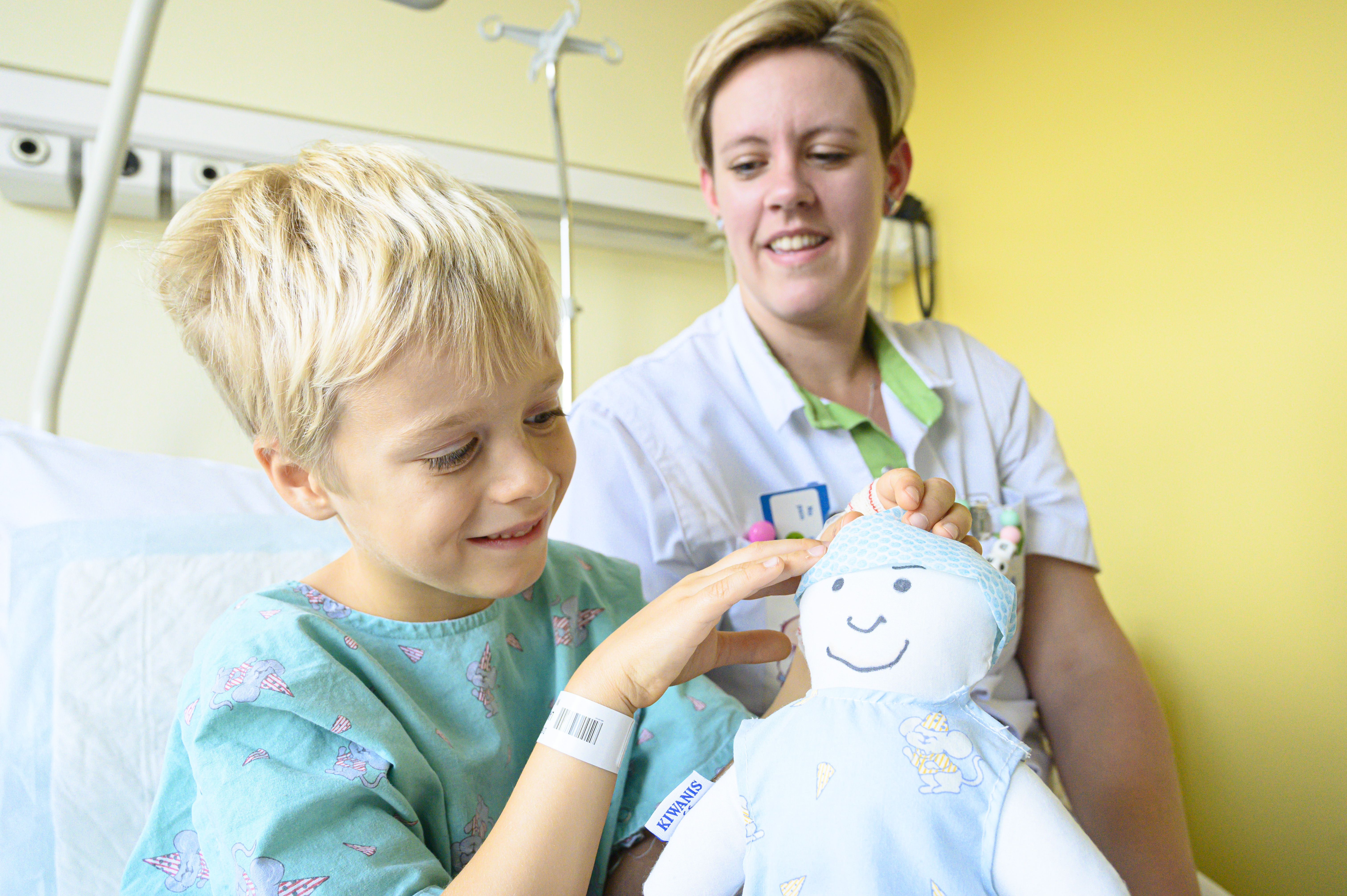Puff for children

Please note
The info on this page only applies to patients and treatments at St Vincent General Hospital in Deinze.
Because your child suffers from a difficult cough, wheezing, your physician has prescribed a puff or dosed aerosol.
In puffs, medication is administered by inhaling using a spacer (e.g. an aerochamber, babyhaler, vortex, volumatic or nebulator). A spacer is purchased once and is personalised.
What do you need to puff?
What do you need to puff?- the prescribed medication
- the spacer
- a clean cotton cloth or a clean plastic bag or toiletry bag for transportation
When do you give the puffs?
When do you give the puffs?You should preferably give the puffs before feeding. Above all, try to build in regularity. At least puff in the evening before brushing your teeth.
How do you proceed?
How do you proceed?- Wash your hands.
- Check that the spacer is clean and dry; there should be no water droplets left in it.
- Shake the puff a few times (with attachment facing down).
- Place the puff on the end of the spacer. Hold it horizontally and press once. Repeat for multiple puffs.
- Remove the puff from the spacer and put everything away.
With a young child, place the face mask gently but firmly on the nose and mouth. Observe your child's calm breathing. The child should inhale and exhale at least 10 times. Inside the spacer, you will see a valve moving back and forth every time your child breathes in and out. If this is difficult, take your child on your lap, reassure it and gently support its chin while you put the mask on their nose and mouth.
A taller child takes the mouthpiece in first. Then the puff is shaken and placed on the end of the spacer. Press the puff once. Again, gently breathe in and out 10 times. Do not ask a child to breathe 'deeply'. It will then also automatically exhale deeply, and the effect of the medication in the lungs is too short. Repeat this operation for each puff.
When two different puffs are to be given, leave 10 minutes between them. You always start with the puff that opens the airways, e.g. Ventolin (blue). Then give the long-acting puff or the puff with the corticoids, eg. Pulmicort or Flixotide.
If you use Q-var with spacer, the puff should be activated by sliding the flap at the bottom forward.
It's best to let a smaller child have a sip of water after the puff. A bigger child can drink or rinse its mouth. This way, you avoid a fungal infection in the mouth and the teeth will stay beautiful.
Cleaning
CleaningYou clean the spacer weekly with hot water and a drop of detergent. After cleaning (without rinsing), let the spacer air dry under a clean cotton cloth.
Avoid running water directly on the valves of the spacer, this may damage the valves. White deposits of medication on the wall of the spacer are not a problem.
How often do you administer puffs?
How often do you administer puffs?The physician always prescribes how many times a day your child should be given a puff:
- either four puffs a day (every four hours): morning - afternoon - around 4pm - before bedtime;
- or three puffs a day: in the morning - around 2pm - (for older children possibly just after school) - before bedtime;
- or puff twice a day: in the morning - before bedtime.
Questions?
Questions?Do you have any questions after reading this information? You can always contact your attending physician through the secretariat or a ward nurse: +32 (0)9 387 72 40.
Deinze - Paediatrics secretariat
Tel. +32 9 387 72 48
E-mail: secretariaat.pediatrie.deinze@mijnziekenhuis.be
Are you worried or do have questions about your child's admission? You can contact the nurse in the paediatrics secretariat during the day . Please ask the paediatrics secretariat your non-urgent questions by email or by phone.
| Monday | Tuesday | Wednesday | Thursday | Friday |
| 8am to 6pm | 8am to 6pm | 8am to 6pm | 8am to 6pm | 8am to 6pm |
If the secretariat is unable to help you, the paediatrics nurse at St Vincent General Hospital in Deinze can also advise you.
Leaflet
LeafletDownload the leaflet on puffs for children here.


